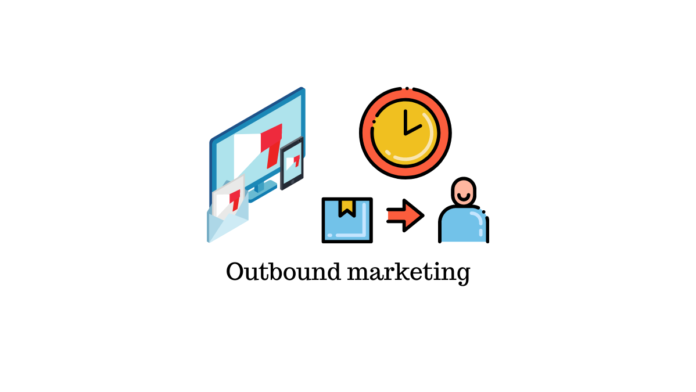Last updated - August 21, 2023
Customers are the lifeline of any business. Without them, your company may go underwater. Unfortunately, most companies struggle with surviving in today’s increasingly competitive landscape. Not to mention, the buyer’s journey is rapidly changing. But what most businesses don’t understand is that there is a process to increase your customer base, which is called outbound lead generation.
So without further ado, here is a thorough guide on how you can get ecommerce leads fast using outbound marketing.
What is a Lead in Ecommerce?
Ecommerce leads pertain to users that show interest in your business by taking actions, such as following your brand on social media, clicking your ad, submitting their personal information for an offer, or subscribing to your email newsletter.
Leads are generally categorized as MQLs and SQLs. Marketing-qualified leads (MQLs) have demonstrated a potential intent to buy your product by engaging with your content. Sales-qualified leads (SQLs) are MQLs that have made it through your sales funnel and are ready to make a purchase.
What is an Outbound Strategy for Lead Generation?
Outbound marketing is a way to send your company’s message to potential customers. Its ultimate goal is to cast a wide net to reach as many potential leads as possible. Examples of outbound lead generation techniques include trade shows, email blasts, and cold calling.
Tools that capture lead attention in-person, such as those used in tradeshows, can come in a range of different graphics, such as flyers, pop-up stands, brochures, promotional products, and posters. You can create your own event poster using Adobe’s free event poster maker tool.
Outbound vs. Inbound Lead Generation
Unlike outbound lead generation, an inbound advertising strategy aims to attract and engage visitors to your website to turn them into leads. You may nurture and capture your visitors along the funnel and finally convince them to make a purchase or your desired action with your content materials.
While both lead generation tactics leverage the rapport you’ve established between your company and target audience, each lead generation strategy is different in its approach.
In outbound marketing, your company makes the first move. You send out content to your target market to catch potential interest. It takes more of a proactive outlook to decide whether a customer is ready or not. Inbound strategy, on the other hand, centers on consumers. Customers are in control of all activities. This means they can discover your company at their convenience.
How to Get More Ecommerce Leads Fast Using Outbound Marketing Strategy
Here are eight actionable strategies to acquire leads more effectively.
1. Pay-per-click (PPC) advertising
With a PPC campaign, you decide where your advertisements appear depending on your customers’ search behavior. After that, you specify a budget for each website click. An advantage of PPC advertising is that you only pay when a customer opens your ad.
While you focus on your SEO ranking, PPC advertising is an excellent strategy to reach consumers. PPC may also come in handy for keywords with a definite buying intent but are saturated by your rivals.
2. Cold outreach
Contrary to widespread assumption, cold outreach is far from old-fashioned. When strategized properly, it can be effective in garnering leads. Perhaps, this is why many marketing experts still rely on cold outreach to generate leads.
You can acquire immediate access to decision-makers and create an impact on them with customized cold calls and emails. However, keep in mind that the effectiveness of cold outreach will likely vary according to one’s industry and how consumers are targeted.
3. Multichannel outreach
While you may continue to use a single channel to reach out to your audience, you should not ignore other platforms. Multichannel outreach raises brand recognition, allows you to contact more of your target demographic, and improves customer retention.
You may increase your lead-generating efforts by being active on several platforms. In fact, after getting a series of contacts via multiple means, 82% of customers reported accepting meetings with salespeople.
4. Marketing automation
Over the last several years, the number of businesses searching for marketing automation has tripled.


Automating outbound customer service tasks saves time, energy, and labor. It takes the guesswork from recording essential data on how your outreach campaign is going and simplifies the process of reaching out to your audience across multiple platforms.
Moreover, consumers value responsiveness in the companies they do business with – they are nine times more likely to finalize a purchase when a rep follows up on an inquiry within five minutes.
5. Email personalization
You may use email marketing to update your subscribers about new items and any other information they might consider helpful. You can also utilize other email marketing hacks, such as automated campaigns, to deliver personalized messages to your subscribers. Of course, this would depend on their engagement with your business.
For instance, email marketing allows you to send a link to your customer who added a product to their cart but left without buying it. This link will encourage them to return and finish the purchase. Similarly, when your company has a sale, you can persuade them to use ecommerce discounts.
6. SEO optimization
Consider how your target buyers browse for things on the internet. They usually start by typing a query on search engines like Google. With an SEO strategy, you can optimize your site so that your pages appear higher in the search results. This makes it simple for prospective consumers to discover you. It also enables your brand to focus its marketing efforts on targeting those looking for your services or products.
7. Personalization
Technology has rapidly evolved. You can personalize almost everything in outbound lead generation, including scripts for landing pages, emails, calls, and even sales objectives.
Approximately 72% of consumers today will engage only with customized content. Personalization has also been shown to effectively communicate the advantages of a service or product to a possible lead, increase sales, and improve the overall customer experience.
8. Content syndication
The practice of distributing your content in various channels to reach your target audience is known as content syndication. With the strategy, you pick who and when your material is viewed. This must be why 65% of marketers utilize content syndication as a critical component of their lead-generating strategy. It improves a company’s return on investment (ROI) and enhances the credibility of its content.
Benefits of Outbound Strategy
Including an outbound component in your lead generation plan is critical when distinguishing your company from other businesses competing for your audience’s attention. With this in mind, here are some reasons why outbound strategy still works in meeting your marketing goals.
1. Close sales more quickly
Outbound marketing moves the average prospect down the sales funnels relatively more quickly than inbound marketing conversions. Thus, you can leverage it to provide captured leads with accurate and relevant information that they need to make an informed decision.


2. Pursue new demographics
Every business will want to expand into new markets eventually. Outbound lead generation tactics are excellent for identifying new demographics and gauging how well your product is received. Furthermore, you may obtain immediate feedback with outbound advertising. This makes it simple to pinpoint marketing tactics that perform best and fine-tune your efforts appropriately.
3. Build awareness
The inbound method of growing your audience necessitates regular content publication, the acquisition of high-quality backlinks, and the development of partnerships with influencers. Even with a detailed plan, construction requires a significant amount of resources.
On the other hand, paid advertising is a quick fix. Businesses may target prospective clients through social media campaigns, paid ads, content marketing, and SEO efforts. This outbound strategy is an especially great technique to drive your objectives if you know your target demographic well.
4. Works hand-in-hand with inbound strategies
An effective outbound marketing plan can supplement your inbound strategies. Since most companies invest in their inbound strategy at a higher rate than ever before, sponsored advertisements can help boost your content. You’ll get in front of consumers quicker by combining inbound and outbound marketing methods rather than waiting for organic growth.
The Bottomline
With today’s transition to the digital world, effective outbound marketing tactics can do wonders for your business. Remember to integrate it with your inbound marketing strategies, and you might just have all the aces up your sleeves.











